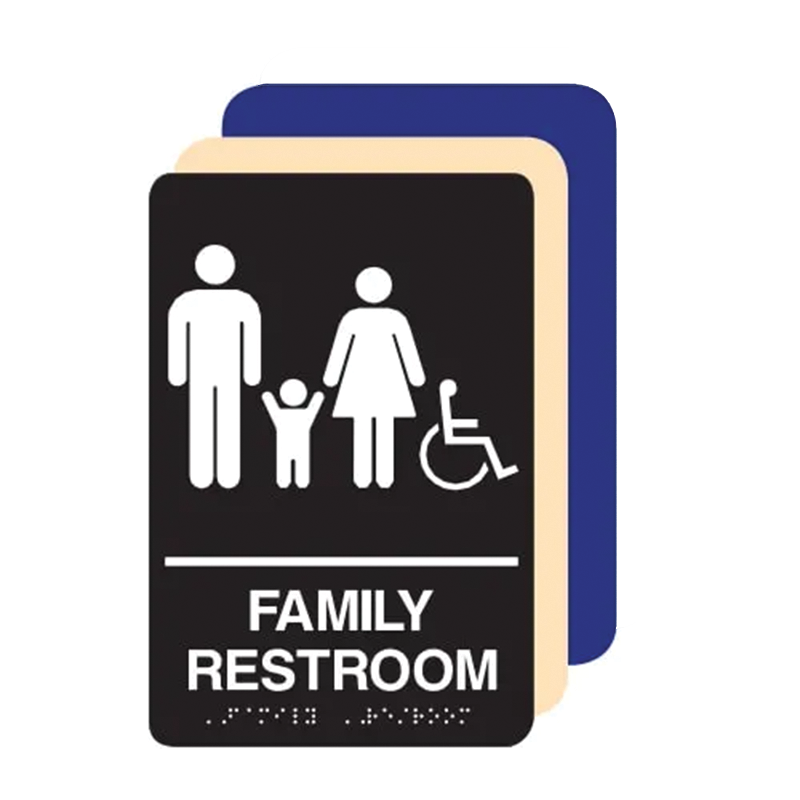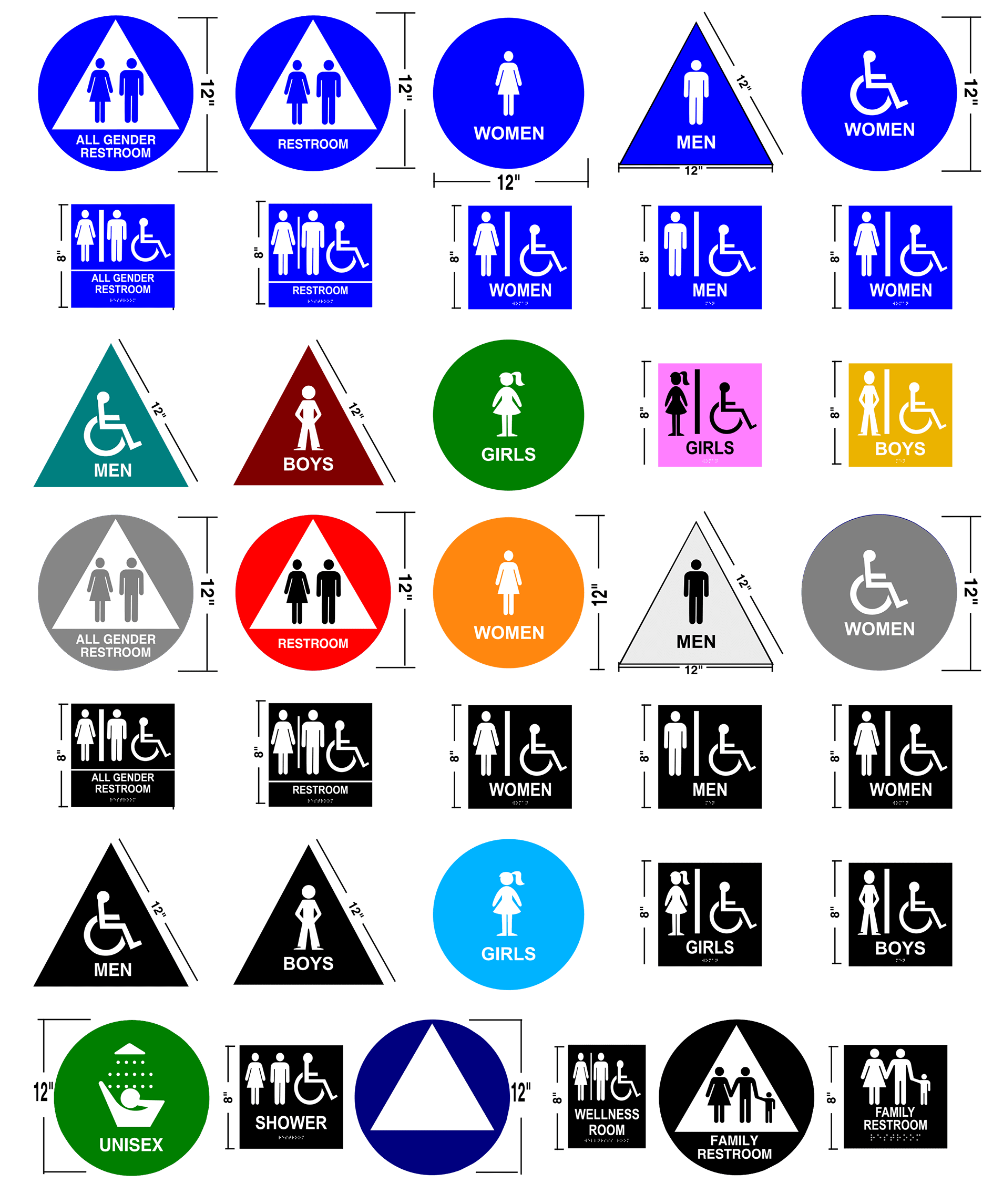ADA Signs: Ensuring Availability and Compliance in Public Spaces
ADA signs plays an essential function in ensuring access and conformity within public spaces, significantly contributing to a comprehensive environment for individuals with specials needs. As we discover the subtleties of ADA signs, from responsive features to design complexities, it's important to take into consideration just how these elements coalesce to copyright the legal rights of all individuals.
Value of ADA Signage
In contemporary culture, the value of ADA signs expands past plain conformity with lawful requireds to personify a commitment to inclusivity and availability for all people. These indicators are vital in producing environments where individuals with disabilities can browse public rooms with the exact same simplicity and independence as those without disabilities. By providing standard and clear details, ADA signs guarantees that everyone can access centers, services, and information without obstacles.
The value of ADA signage hinges on its capacity to improve the lifestyle for individuals with specials needs by promoting equivalent gain access to. It eliminates the barriers that may otherwise prevent their capability to participate totally in neighborhood life. These signs offer as visible indicators of an organization's devotion to diversity and equal rights, showing broader social worths that champion the civil liberties and self-respect of all individuals.
Additionally, ADA signage plays an important role in public safety and security. By directing people to exits, restrooms, and various other vital centers, it guarantees that all individuals, despite physical capacity, can evacuate safely throughout emergency situations. In summary, ADA signage is not simply a governing requirement however an effective tool for promoting a comprehensive and fair culture.
Trick Elements of Compliance

Positioning is essential; indicators have to be installed in locations that are reachable and easily visible. Generally, signage should be mounted between 48 and 60 inches from the ground to ensure ease of access for both standing and wheelchair users. Responsive components, such as Braille, are crucial for individuals with aesthetic problems, giving important info in a non-visual style.
High-contrast colors between the message and history are needed to improve readability for individuals with reduced vision. The ADA mandates details comparison ratios to ensure quality. In addition, personality size is a key factor to consider, with minimal elevation requirements determined by the checking out distance to ensure readability from numerous angles.
Style Considerations for Accessibility
Creating easily accessible signage calls for a careful method to guarantee it satisfies the needs of all customers, especially those with disabilities. This entails considering numerous style elements that improve readability and usability. Trick elements consist of the option of typeface, shade comparison, and responsive attributes. Typefaces should be sans-serif, with clear and basic letterforms, to assist in easy reading. The dimension of the text is just as vital, with ADA standards suggesting a minimal height based on watching find out this here distance to make sure legibility.
Contrasting shades in between message and history are important for visibility, especially for people with aesthetic problems. In addition, responsive components, such as Braille and increased personalities, are vital for individuals who are blind or have low vision.
Furthermore, the placement of signs plays a substantial duty in access. Indicators must be set up in places that are unhampered and conveniently reachable. Guaranteeing that signage is mounted at ideal elevations and angles allows all users, consisting of those making use of mobility devices, to communicate with them effectively.
Usual Errors to Avoid

An additional common error is the inaccurate placement of signs. ADA guidelines define precise elevation and place requirements to make certain that indications are conveniently visible and obtainable by all people, including those utilizing wheelchairs. Ignoring these standards not only interferes with availability but likewise risks non-compliance with lawful standards.
In addition, insufficient comparison between text and history is a frequent oversight. Appropriate comparison is vital for readability, specifically for individuals with low vision. Developers sometimes select shades that are visually attractive yet lack the required comparison, rendering the text tough to discern.
Finally, some developers fall short to incorporate responsive elements, such as Braille, which are important for people that are blind. Leaving out these attributes not just causes non-compliance with ADA regulations but likewise limits accessibility for a sector of the populace that counts on tactile information.
Future Trends in Signage
Advancements in modern technology and raising recognition of inclusivity are forming the future trends in signage layout. Digital signs, for instance, is evolving to consist of real-time updates and interactive functions, which can be important in offering vibrant details in public areas.
An additional arising trend is the application of enhanced fact (AR) to improve user experience. AR-enabled signs can overlay digital info onto the physical environment, giving visually damaged individuals with auditory or haptic responses. ADA Signs. This technology not just improves access however additionally creates an interesting experience for all users
Sustainability is additionally a significant aspect influencing signage fads. Environment-friendly materials and energy-efficient illumination remedies are being prioritized to line up with international environmental goals. In addition, developments in products science are resulting in the growth of more weather-resistant and sturdy signs.
Conclusion
ADA signage plays a crucial duty in assuring accessibility and compliance within public areas by integrating responsive components, high-contrast shades, and strategic placement. The adherence to ADA requirements not only assists in secure navigating for individuals with disabilities but also represents an organization's commitment to variety Go Here and inclusivity. By preventing usual blunders and welcoming future fads, public spaces can remain to progress these worths, ensuring that the rights and self-respect of all people are valued and promoted.
ADA signs plays an indispensable role in guaranteeing accessibility and conformity within public rooms, dramatically adding to a comprehensive atmosphere for individuals with impairments. As we explore the subtleties of ADA signs, from tactile features to develop complexities, it's critical to consider exactly how these components coalesce to support the rights of all customers.In modern-day society, the significance of ADA signs prolongs beyond plain conformity with legal requireds to symbolize a commitment to inclusivity and accessibility for all people. By offering clear and standardized info, ADA signage makes certain that everybody can access facilities, solutions, and information without obstacles.
ADA signage plays an essential function in guaranteeing accessibility and conformity within public spaces by including tactile components, high-contrast colors, and strategic positioning. (ADA Signs)